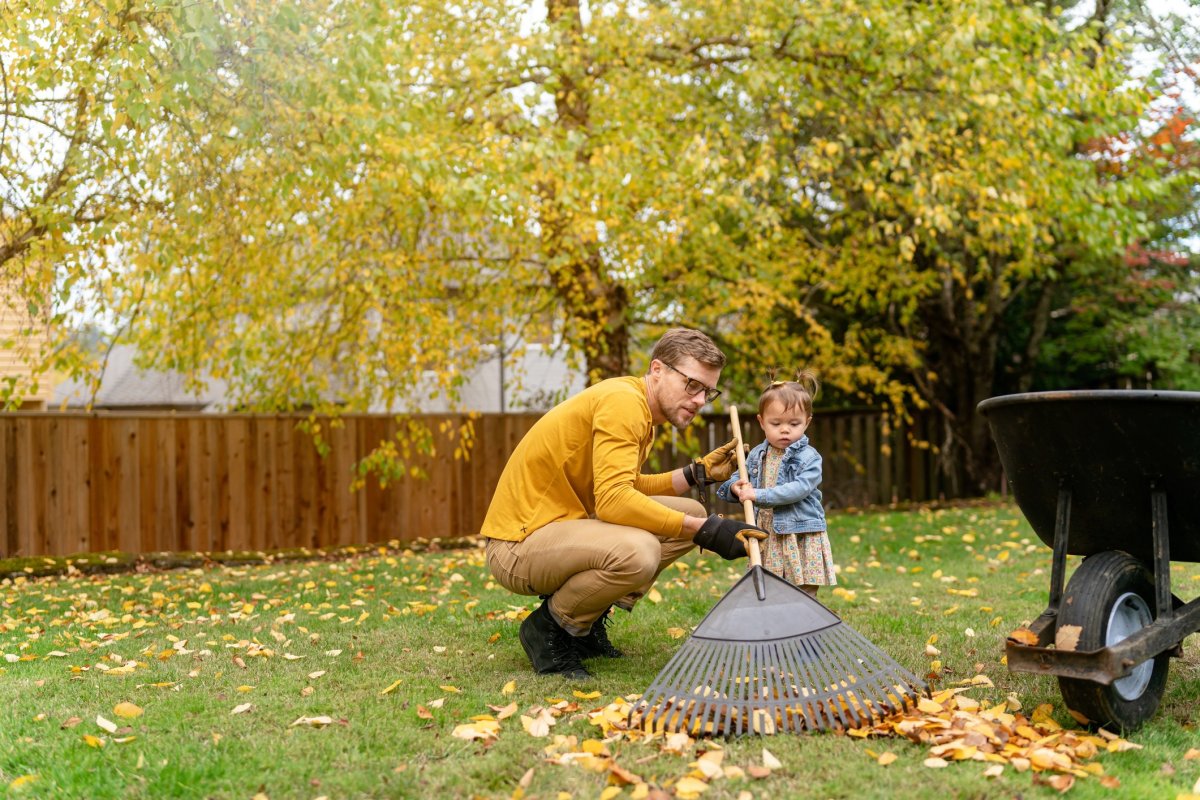

We may earn revenue from the products available on this page and participate in affiliate programs. Learn More ›
Standing in the garden tool section of a hardware store and trying to choose a rake can be overwhelming—there are so many different types and sizes from which to choose. The average gardener or DIY landscaper will likely need only two or three different types of rakes, at the most. The trick is knowing which yard rakes will speed garden and lawn tasks, and which won’t be of much help in your situation. Ahead, learn about rake parts and materials, and how to choose rakes you’ll actually use.
Parts of a Rake
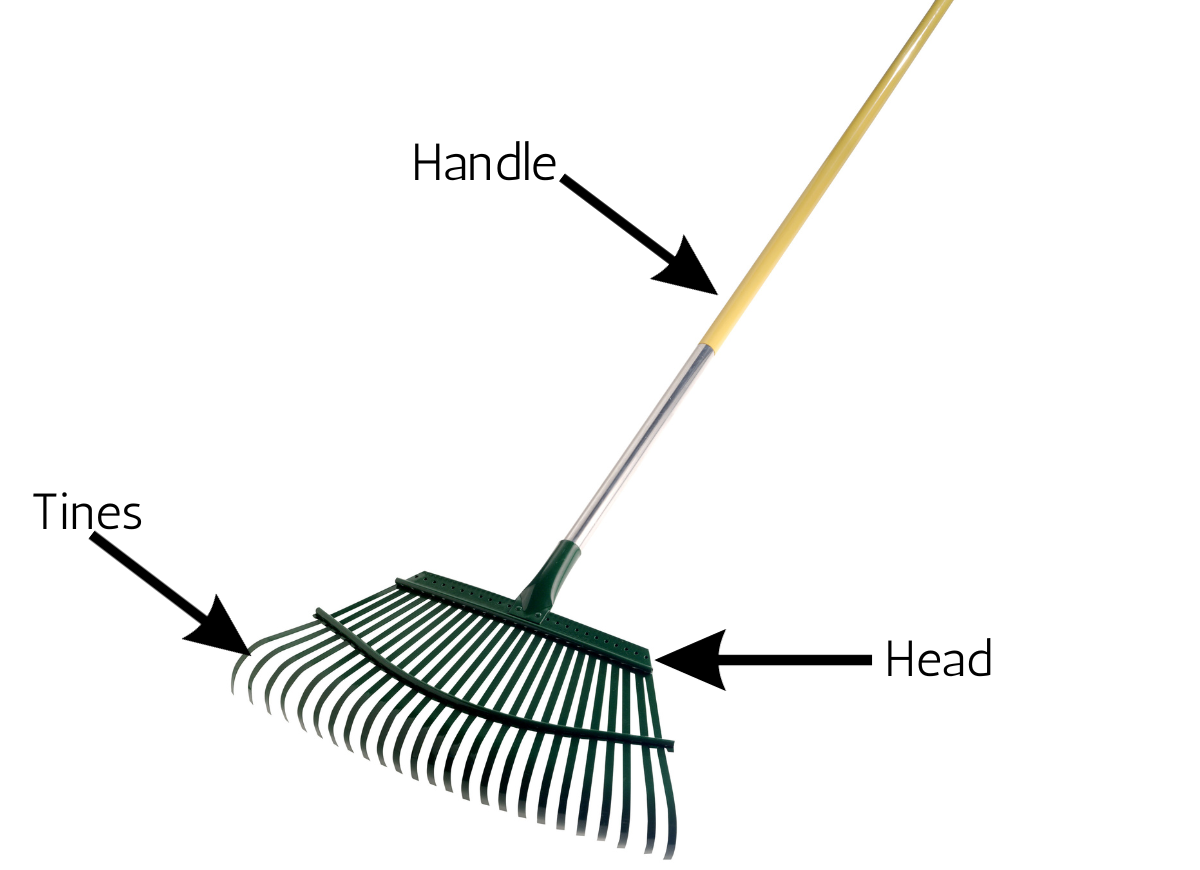
As with any good tool, rakes are made up of a few key parts. Knowing these parts and the materials they might be made from can help a DIYer choose which rake is best for their particular needs and project.
- Handle: The handle of the rake is the part that the DIYer holds while using the tool. They may be long and intended for use with two hands, short for one-hand use, or even extendable for reaching long distances or heights.
- Head: The head is on the end of the handle; it’s essentially the business end of the rake. It can be triangular or rectangular in shape, depending on the model and type.
- Tines: The best way to explain tines is that they’re like the fingers that hang off the end of the rake head. They come in many shapes, sizes, and materials, and they often determine what the rake is best for.
Some rakes may have additional parts, like levers for adjusting the width of the tines, foam grips, and more, but these three are pretty standard.
How to Choose a Rake
There are many different types of rakes, and choosing the right one isn’t always straightforward. In addition to considering the job the rake must perform, take into account the following points when deciding which tool to add to your collection.
Rake Materials
Rake handles are available in a wide range of materials. Such choices include wood, fiberglass, aluminum, steel, and even plastic in some cases. The best combination of strength and weight will usually be fiberglass or aluminum, but wood and steel are also good choices (steel can be heavy).
Head and Tine Materials
When it comes to choosing a rake, knowing which tine materials are best for the task are important.
- For leaves, plastic is excellent as it’s lightweight and sturdy enough to move the piles, and doesn’t get as slippery as metal might in wet leaves.
- For rakes for grass and other general purposes, metal is the best as it can do just about anything.
- For stone and gravel, aluminum is best due to its strength-to-weight ratio—this is also true for heavy raking like snow and concrete.
- For delicate flowers, groundcover, and other similar plants, bamboo is a great choice as it’s very flexible and unlikely to harm the flowers.
Length
Handle length can be a consideration. For taller folks, longer handles like those in the 5- to 6-foot range are ideal. For average-height people, 4- to 5-feet will work. But, when it comes to snow rakes, shoppers will find extensions that snap together to reach higher. For rakes designed to reach into tight spaces, it’s certainly personal preference. Longer handles reach further, but shorter handles are easier to control.
3 Types of Rakes Everyone Should Have
Lawn and Garden Rakes
1. Leaf Rake
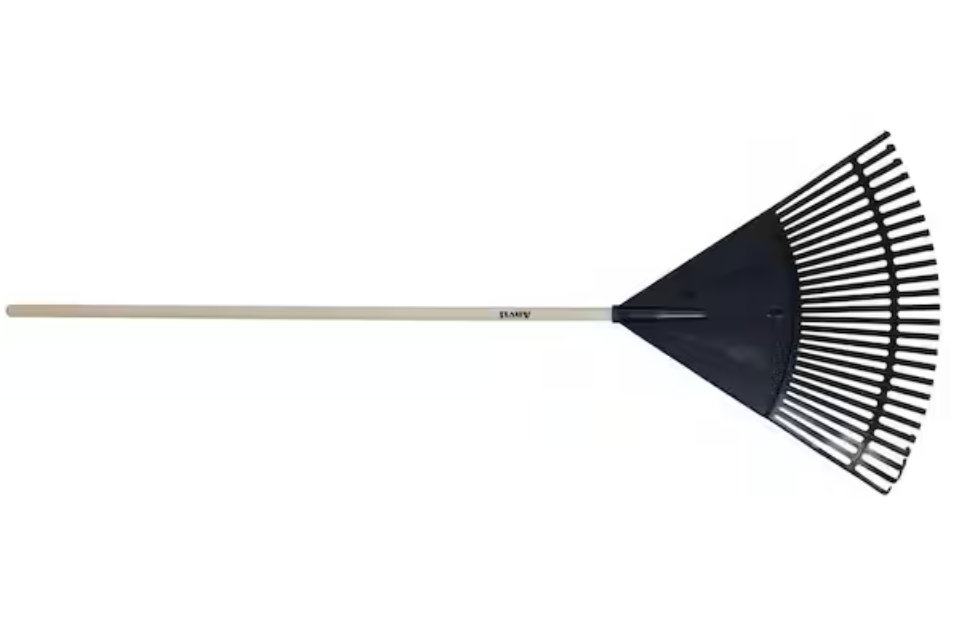
Best For: Raking leaves and light debris like twigs and grass clippings
Our Recommendation: Anvil Poly Leaf Rake at Home Depot for $13.98
Anvil’s Poly Leaf Rake features flexible plastic tines and a 47.25-inch hardwood handle for general use.
If you’re raking leaves, what you need is a leaf rake, also known as a lawn rake. Sold in varying widths (up to 30 inches), it has a long handle with tines that fan out in a triangle. The tines of a leaf rake are generally made of metal, plastic, or bamboo. Metal is the most resilient (and great for pine needles) but perhaps not quite as effective as plastic tines when moving large quantities of leaves, especially if they’re wet. Leaf rake tines that are made of bamboo are the most fragile, of course, but are much gentler on plants if you are raking over ground covers or garden beds.
2. Shrub Rake
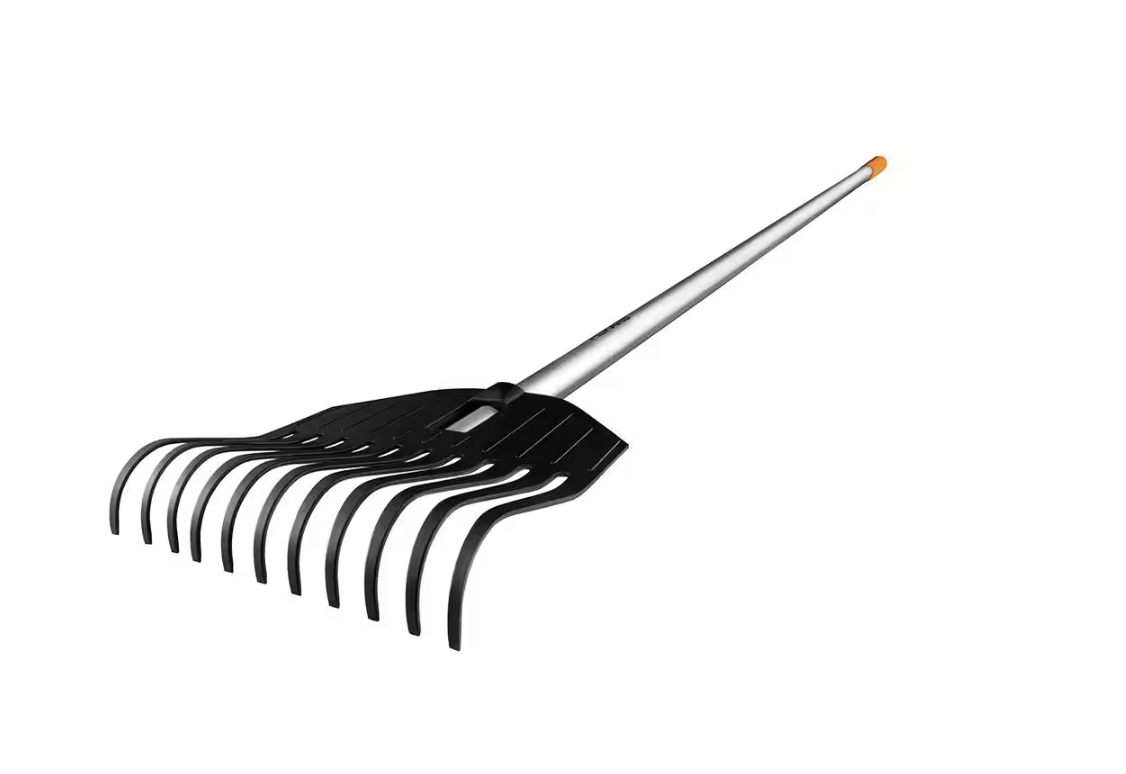
Best For: Working around trees, shrubs, and tight places
Our Recommendation: Fiskars 8-inch Shrub Rake at The Home Depot for $14.99
Fiskars’ 8-inch shrub rake features sturdy plastic tines with a long aluminum handle for reaching between shrubs, bushes, and plants.
A shrub rake is built very much like a leaf rake. It has a smaller fan of tines, though, allowing it better access to the ground beneath shrubbery, around fencing, and in other tight areas of your landscape. Depending on your landscape and your needs, a shrub rake may be a worthy addition to your shed, especially considering that even top-quality tools of this type sell for under $20. When purchasing, pay special attention to the length of the handle and note that some handles telescope in and out, a function that may be handy for reaching around shrubs.
3. Bow Rake
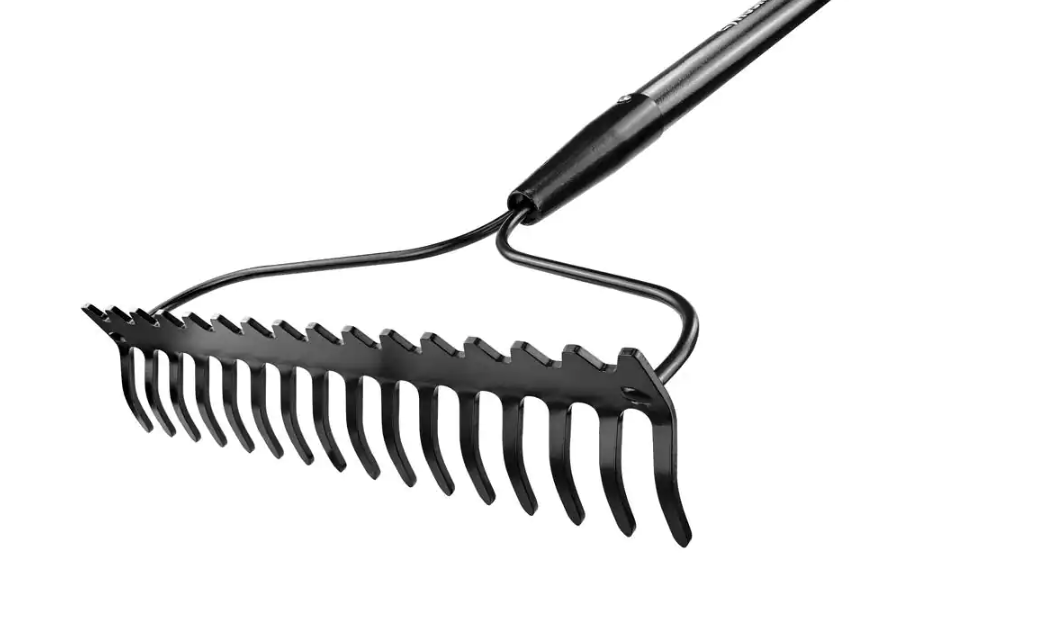
Best For: Leveling dirt, moving gravel, and raking heavy materials
Our Recommendation: Husky 57-inch Bow Rake at The Home Depot for $29.98
The Husky 57-inch Bow Rake features 16 heavy-duty metal tines and a fiberglass handle that’s sturdy enough for moving heavy materials.
A bow rake is generally considered homeowners’ best bet for leveling dirt, sand, and other materials that are heavier than leaves. The tines of a quality bow rake are made of metal and are shorter and thicker than those of a leaf rake (and spaced more widely). Basically, this type of rake is a workhorse—definitely something you want at your side, as bow rakes use include spreading gravel in a gravel driveway or spreading mulch if your yard care routine includes seasonal mulching, or when doing any hardscaping projects.
4. Hand Rake
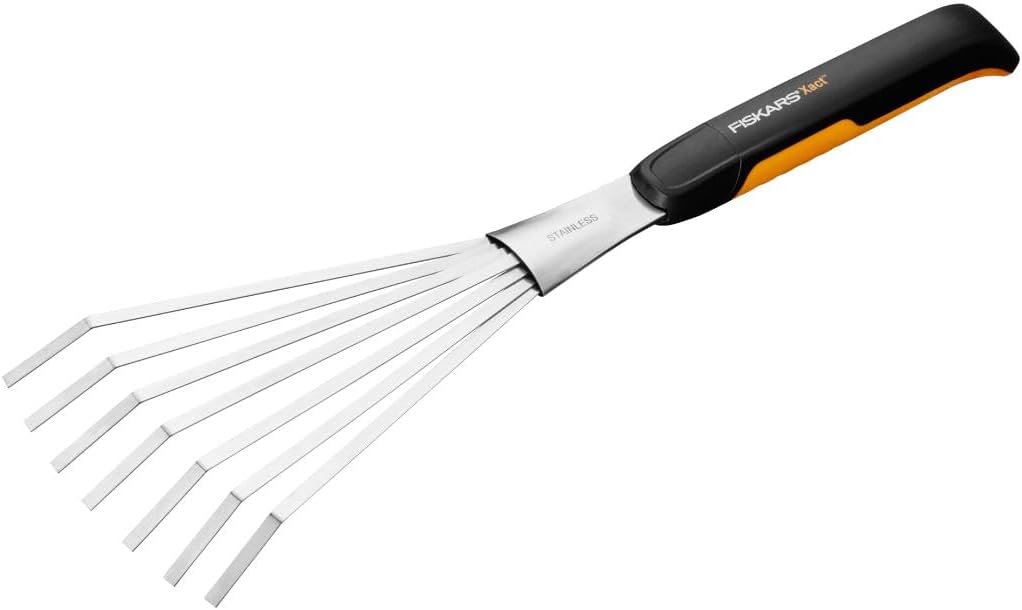
Best For: Raking around delicate flowers and plants, picking up piles of leaves, and cleaning out garden beds.
Our Recommendation: Fiskars Xact Hand Garden Rake at Amazon for $12.77
With tough but flexible stainless steel tines, the Fiskars Xact Hand Garden Rake is a great choice for working with delicate plants or picking up piles of leaves.
A hand rake is a smaller version of a shrub rake or bow rake. It has a short handle and is more or less the same size as a garden trowel. A hand rake is what you want to use in and around flowers and smaller plantings. The short handle gives you greater control in those tight spaces; just be prepared to get down on your knees with it. Expect to pay around $10 for a model that can last for many years.
The scoop rake, an alternate type of hand rake, is designed for picking up leaves that have already been raked into piles. Typically, hand scoop rakes come in sets of two—one for each hand—and they resemble giant claws for grabbing large amounts of leaves when filling lawn bags.
5. Thatch Rake

Best For: Removing thick mats of grass clippings, leaves, and other debris from the soil surface
Our Recommendation: Ames 54-inch Adjustable Thatch Rake at The Home Depot for $60.58
The Ames 54-inch Adjustable Thatch Rake is heavy duty and allows users to choose between different tine lengths for improving or reducing reach into the thatch.
A thatch rake is not for raking leaves at all. It’s for removing thatch—a layer of organic material between your lawn and the soil surface. Unlike most other rake types, a thatch rake features sharp blades on both sides of its head. One side breaks the thatch up; the other side removes it.
Left in place, a thick layer of thatch can keep air and sunlight from reaching the base of the grass blades, which can lead to lawn diseases. Removing a heavy layer of thatch (1/4-inch thick or thicker) will improve the health of the lawn and perk it up. A good thatch rake is an essential tool for this task.
6. Power Rake
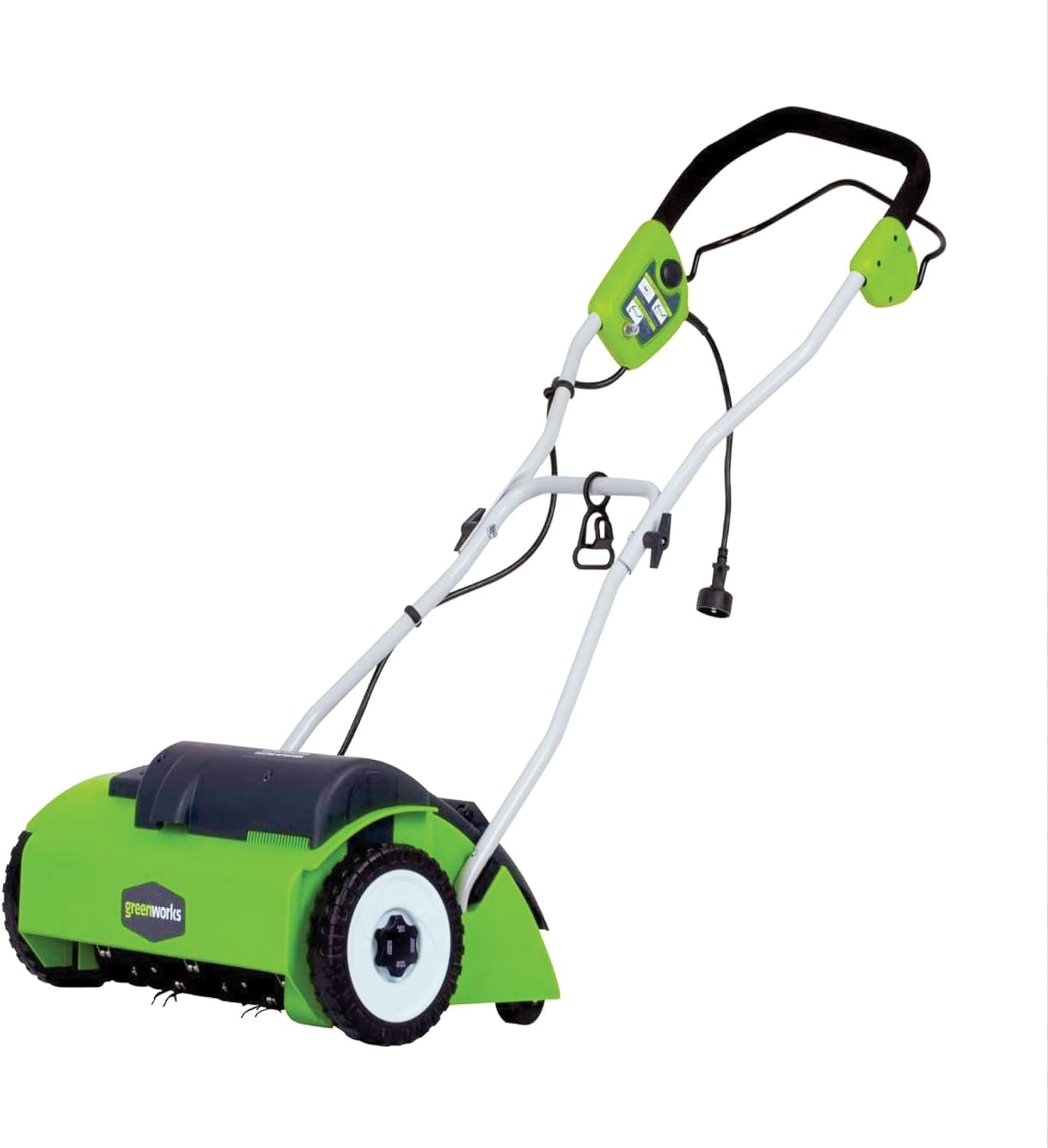
Best For: Quickly and cleanly removing debris from a grass surface.
Our Recommendation: Greenworks 10-amp Dethatcher at Home Depot for $146.90
The Greenworks 10-amp dethatcher features a 14-inch-wide dethatching path and adjustable heights to allow this power rake to remove debris that’s packed down on the soil.
This rake quickly removes debris on the lawn and can dig up thatch, which is a chore with a manual thatch rake. All you need to do is push it along—the engine does all the rest. A power rake features a rotating head with metal tines that scrape deeply through the existing lawn to pry up dead leaves, small twigs, and thick layers of thatch, allowing air circulation sun to reach the lowest part of the grass blades.
Some power rakes come with collection bags, while others deposit the raked-up debris behind the machine, leaving the user to rake it up with a leaf rake or lawn vacuum. Power rakes operate on either gasoline or electricity.
7. Garden Rake

Best For: Removing debris from garden beds, turning and tilling soil
Our Recommendation: Ames Floral Level Rake at The Home Depot for $39.99
With a narrow head that reaches into tight spaces, durable metal tines, and a 48-inch hardwood handle, the floral level rake from Ames is well-suited for garden and vegetable beds.
Also called a dirt rake, the garden or soil rake is an essential tool for the seasonal vegetable or flower gardener. It has a long handle and a steel rake head with solid steel tines set at about a 90-degree angle to the rake head. These tines allow the user to break up dirt clods and loosen the soil. The tines may be straight or slightly curved under to help grab large dirt clods and other debris.
A dirt rake is used after tilling or turning the soil, and it is often the last step in garden bed preparation before planting. Because the tines are solid and non-flexible, a garden rake is not well-suited to raking up leaves as it can get stuck in the grass.
8. Landscaping Rake
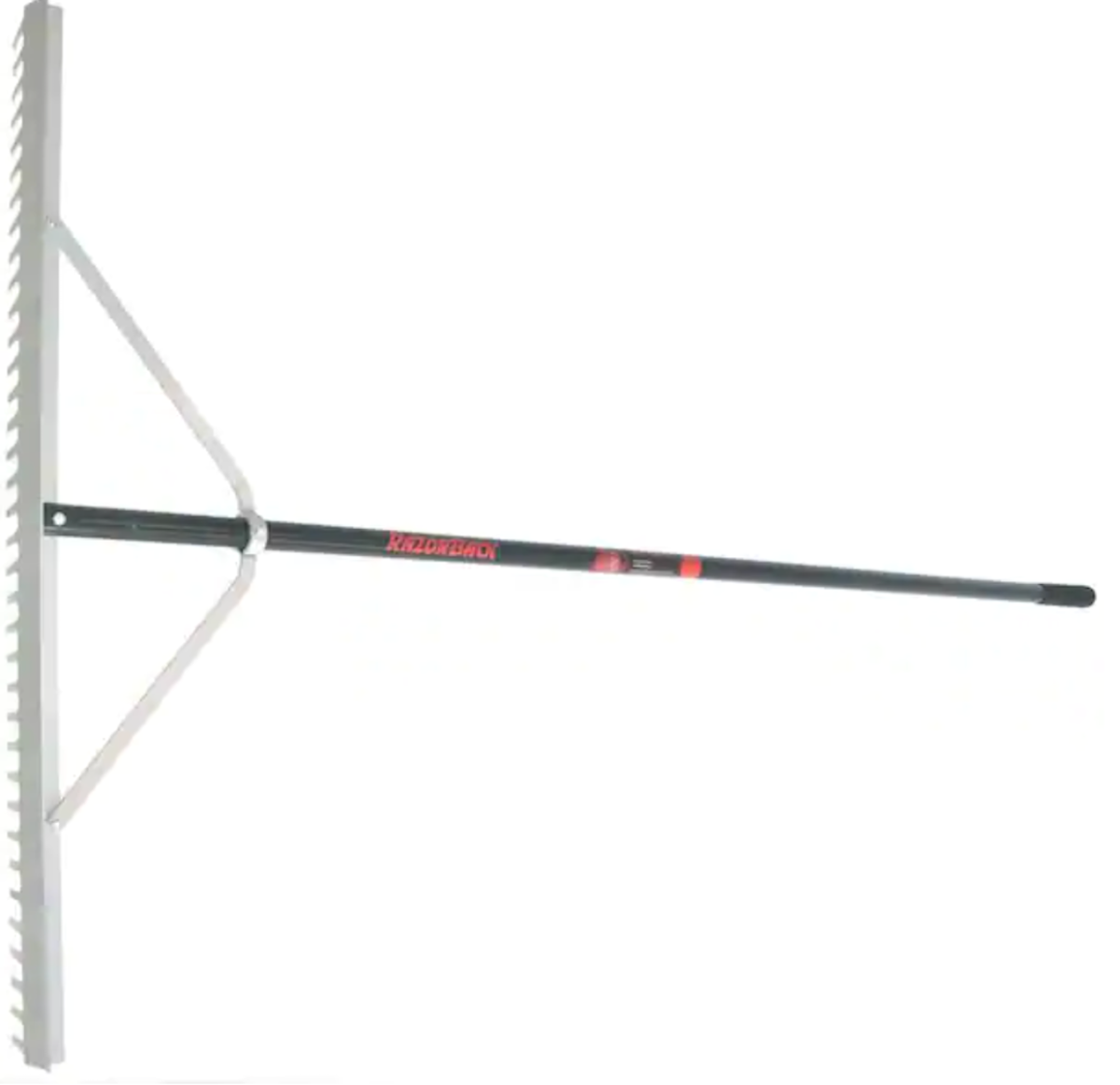
Best For: Moving piles of dirt, gravel, and soil and creating level grades
Our Recommendation: Razor-Back Aluminum Landscape Rake at The Home Depot for $69.98
Between its sturdy aluminum head and lightweight handle, the Razor-Back landscape rake is a great choice for heavy-duty work.
Looking a lot like a garden rake on steroids, a landscaping rake is used to smooth out large sections of soil or achieve an accurate grade on a yard. It’s not meant for raking up leaves or breaking up dirt clods—it’s much too wide for that. A landscaping rake features a 30- to 38-inch or broader head with steel tines set at a 90-degree angle to the handle.
This professional-type rake also features a long, straight handle, and the head is often made from aluminum due to its strength and minimal weight. Handles may be wood, aluminum, or fiberglass, but maneuvering this rake can be tough on the hands because the head is so large. For the most comfortable use, look for a handle that comes with a padded grip.
9. Stone Rake

Best For: Leveling stones, gravel, and pebbles but also dirt and sand.
Our Recommendation: Razor-Back 24-inch Aluminum Rake at The Home Depot for $58.29
The Razor-Back 24-inch Aluminum Rake has a lightweight aluminum head to prevent adding extra weight when moving heavy objects.
Leveling out gravel, pebbles, and mulch takes a strong rake that’s wide enough to speed the task while being lightweight enough to handle with ease. Very similar in design to a landscape rake, but with a narrower head of about 18 to 28 inches, the rock or stone rake (they’re also known as gravel rakes) features a steel or aluminum head that sits at a 90-degree angle to the handle. They can also be used as mulch rakes, if necessary.
The rake tines are solid metal, and the rake comes with a long aluminum or fiberglass handle. Users can both push and pull the rake when leveling out pebbles or gravel. For the most comfortable use, look for a non-slip rubber or silicone grip.
10. Berry Rake
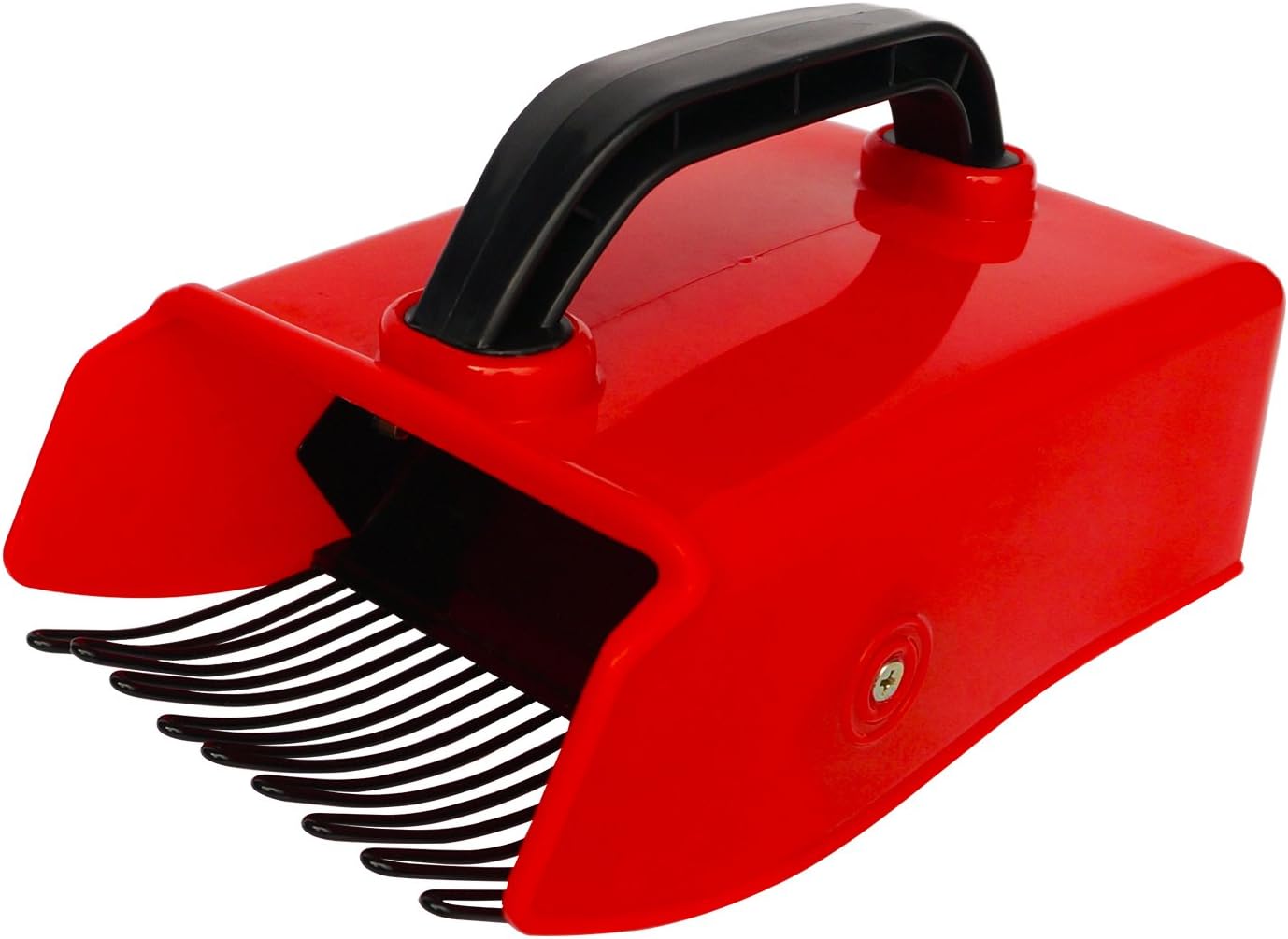
Best For: Removing berries from bushes quickly without damaging them
Our Recommendation: VicBre Berry Picker at Amazon for $11.99
The VicBre Berry Picker features an ergonomic design that’s easy to clean and carefully removes berries without squishing them.
What could be sweeter than harvesting blackberries or raspberries without reaching into a bramble of needle-sharp thorns? A berry rake, sometimes called a “berry picker,” is a hand rake with small, close-set tines that the user slips behind the berries and then pulls to dislodge them from the stems. Depending on the type of berry rake, it may come with an attached bucket for collecting berries.
A berry rake not only saves fingers from being poked, it also saves time and keeps the berries from being inadvertently squished during picking.
Other Types of Rakes
11. Roof Rake
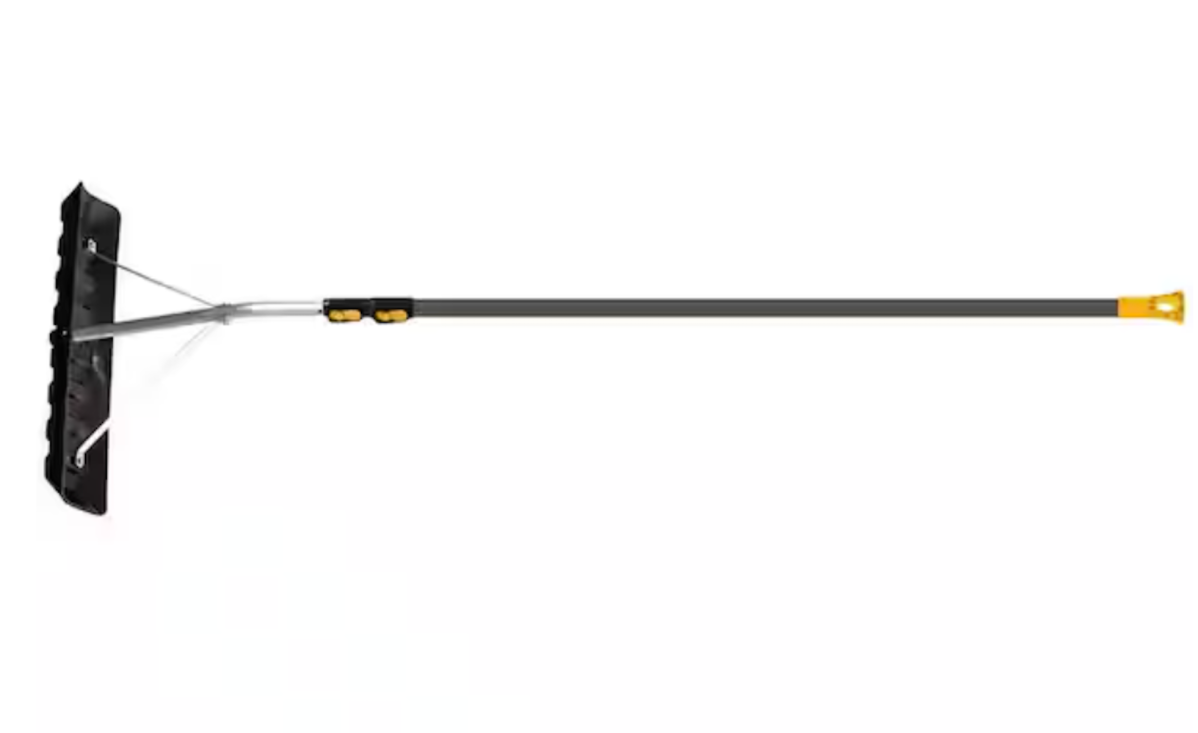
Best For: Removing snow from rooftops and overhangs
Our Recommendation: True Temper Snow Rake at The Home Depot for $74.99
The True Temper Roof Rake features a maximum reach of 17 feet, allowing users to remove snow from overhangs and roofs before ice dams form.
While it may look light and fluffy, a few inches or more of snow accumulation on a roof not only puts undue weight on the roof deck and rafters, it can be dangerous if it slides off and lands on a human or pet. The answer for many who live in snowy climes is a roof rake. The head on this lightweight rake features a wide blade rather than tines, and it’s specifically designed to pull drifts of snow off a roof.
Most snow rakes are unusually lightweight, more so than dirt rakes and landscape rakes, and there’s a reason for that: The user has to lift the rake head and position it on the roof. The handle of a roof rake is extendable, usually by attaching handle poles, up to 20 feet or longer, and the entire weight is generally less than 6 to 8 pounds.
12. Lake Rake
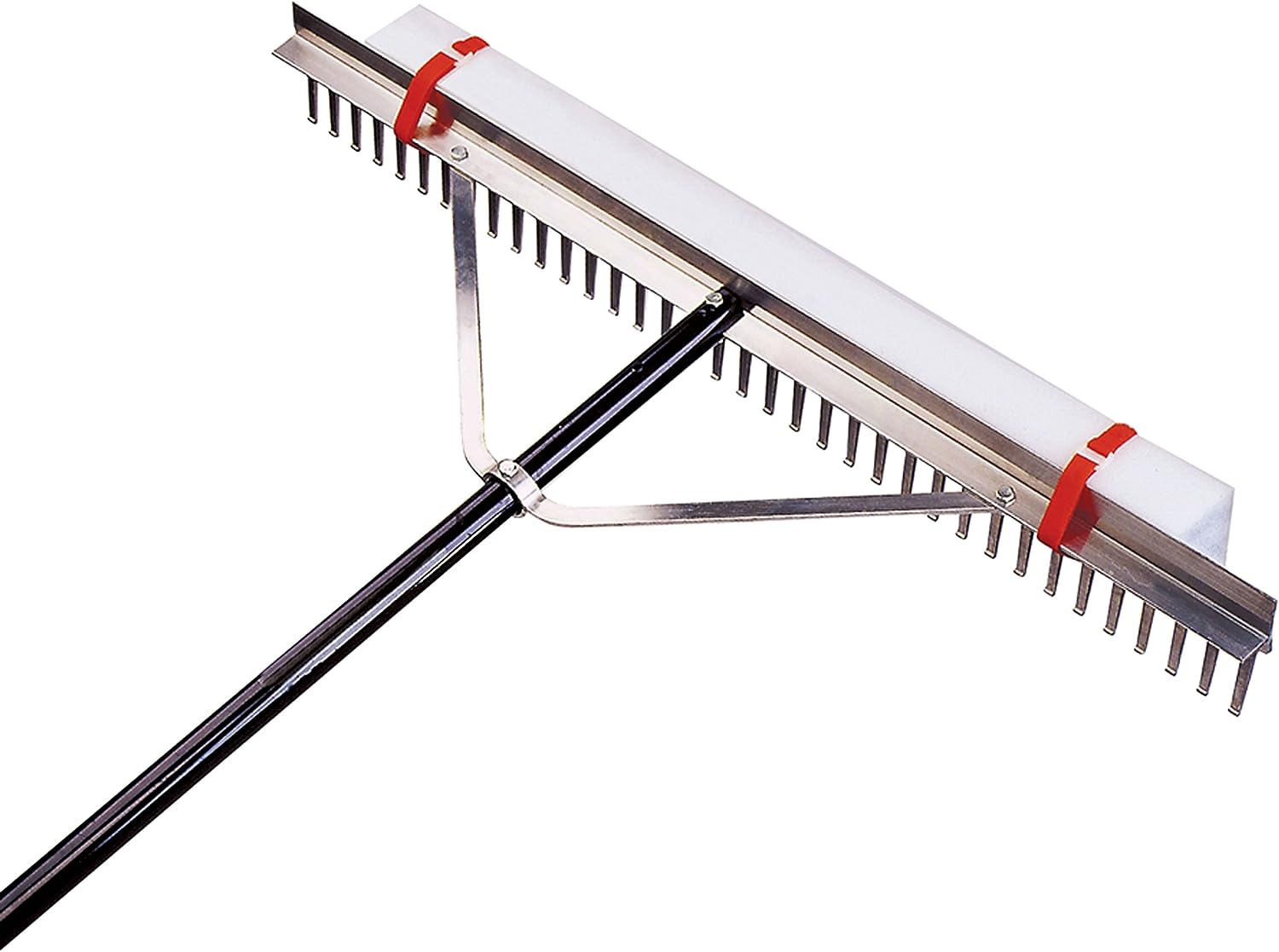
Best For: Removing debris and algae from lakes and ponds
Our Recommendation: Midwest Rake Co. Lake Rake at Amazon for $139.99
The Midwest Rake Company’s Lake Rake features a 36-inch wide head, a polyethylene float, and a two-piece handle for up to 11 feet of reach.
Lakes and ponds are favorite summertime recreational spots, but some tend to collect algae, moss, and even floating debris that keeps potential swimmers on the shore. Clearing a pond of algae or other unwanted debris isn’t anyone’s idea of fun, but a lake rake will simplify and speed the chore.
A lake rake resembles a landscape rake, with a broad aluminum head and solid tines. It needs a way to stay afloat, however, and that’s usually accomplished by attaching a float to the backside. The head comes in various widths, up to 36 inches wide or wider. Those in the market for a lake rake should look for one with a nonslip grip for holding onto the rake when it’s wet.
14. Concrete Rake
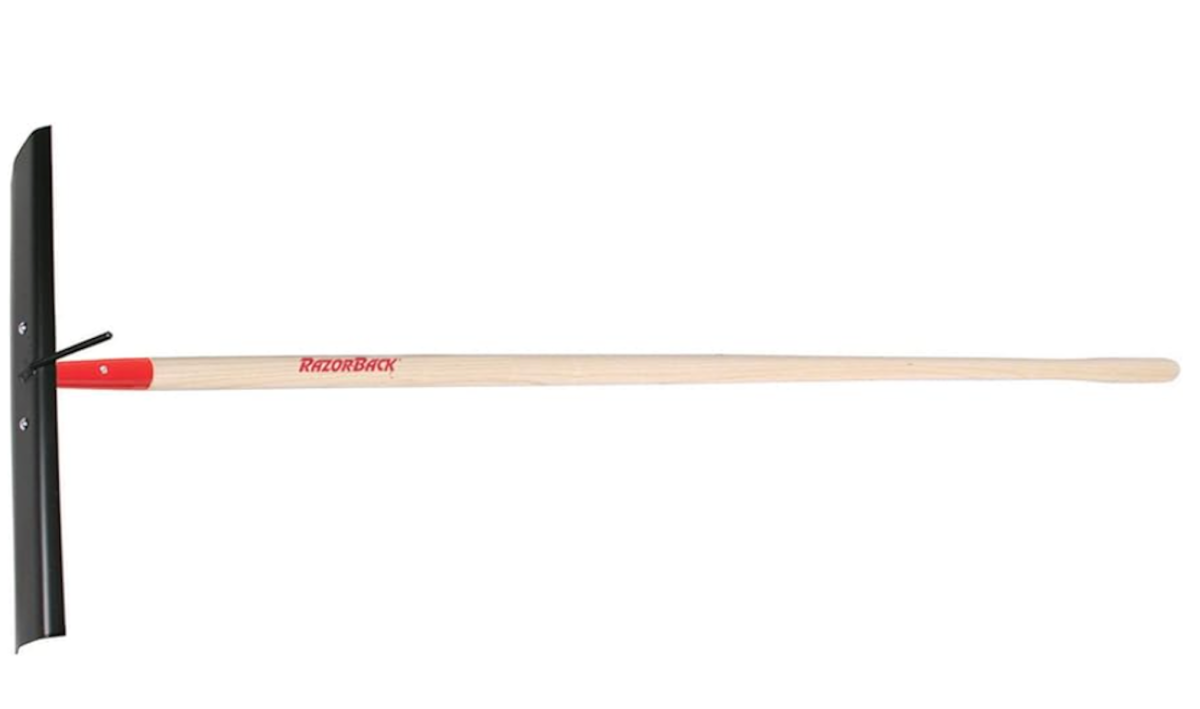
Best For: Moving and leveling wet concrete mix while pouring
Our Recommendation: Union Tools Razorback Concrete Rake on Amazon for $51.46
The Union Tools Razorback Concrete Rake features a hardwood handle, a 20-inch steel head, and a rebar hook to make concrete pouring an easier job.
Concrete rakes are heavy-duty tools used to drag and level large piles of wet concrete mix. They’re typically wooden-handled and feature heavy-duty steel heads. Some may even feature a rebar hook designed to allow the user to lift the rebar grid so concrete can flow underneath it.
This is really the only use for a concrete rake, however, as they don’t have tines so they won’t dig into soil, gravel, or thatch. For that reason, some DIYers may choose to forgo a concrete rake and simply use a shovel. This is a slower process, but doesn’t require investing in a tool they’ll only use once.
15. Ash Rake
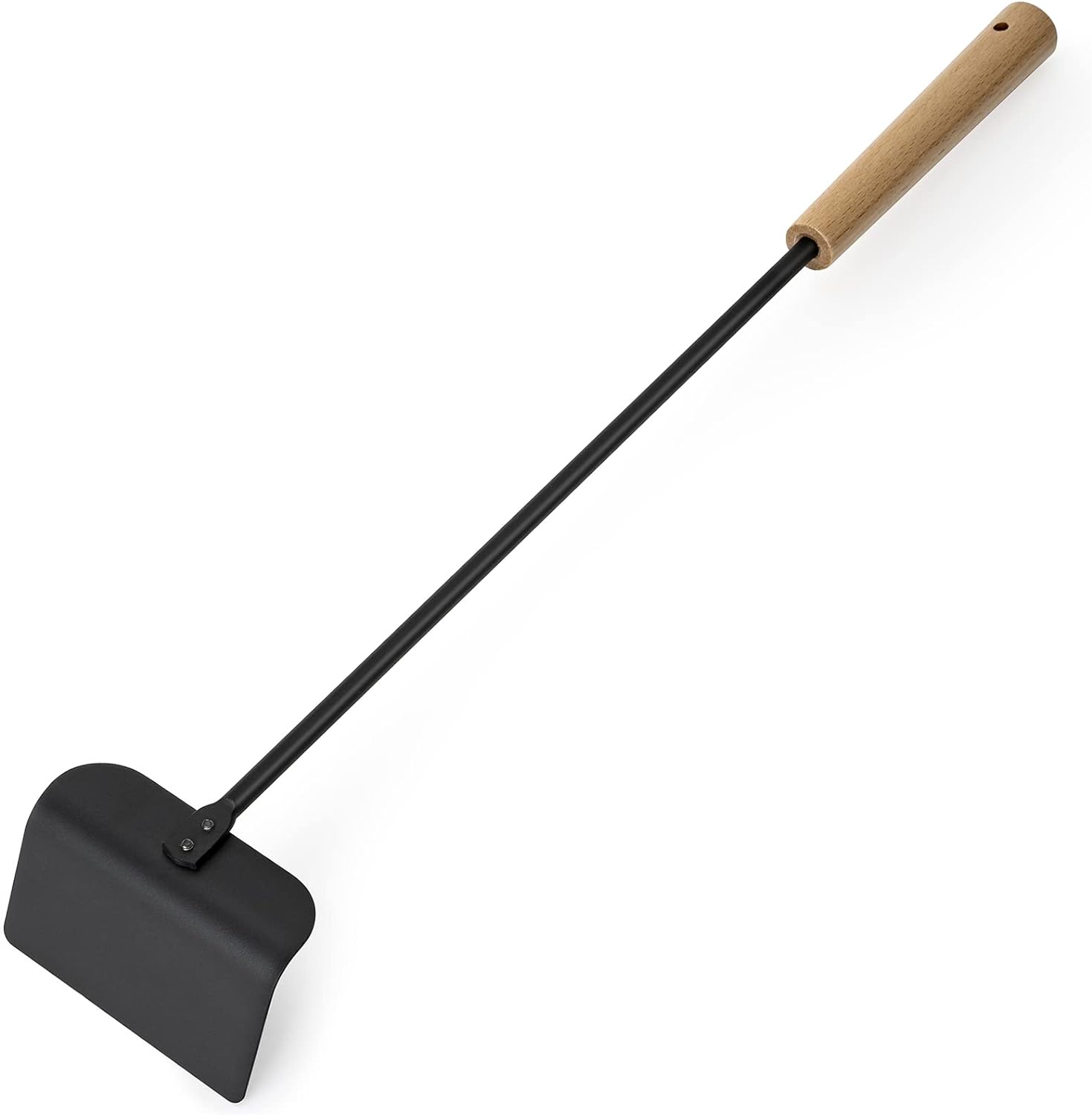
Best For: Removing ash from grills and moving charcoal around as needed
Our Recommendation: Onlyfire Ash Tool at Amazon for $14.99
The Onlyfire Ash Tools features all-metal construction (aside from the wooden handle) and can remove ash and move charcoal while keeping the user’s hand 21 inches from the heat.
An ash rake is designed for removing charcoal ash from the bottom of a barbecue grill, keeping it from choking air flow and flying up onto the food. It can also move charcoal briquettes around while they’re hot.
These rakes don’t have tines and are shaped more like scoopers, but they can pull ash to the edge or scoop into the catch can for quick and easy removal. Also, they’re almost always metal to prevent heat from melting any of their parts. They come in varying sizes, so shoppers should choose one that fits their grill.
16. Zen Garden Rake
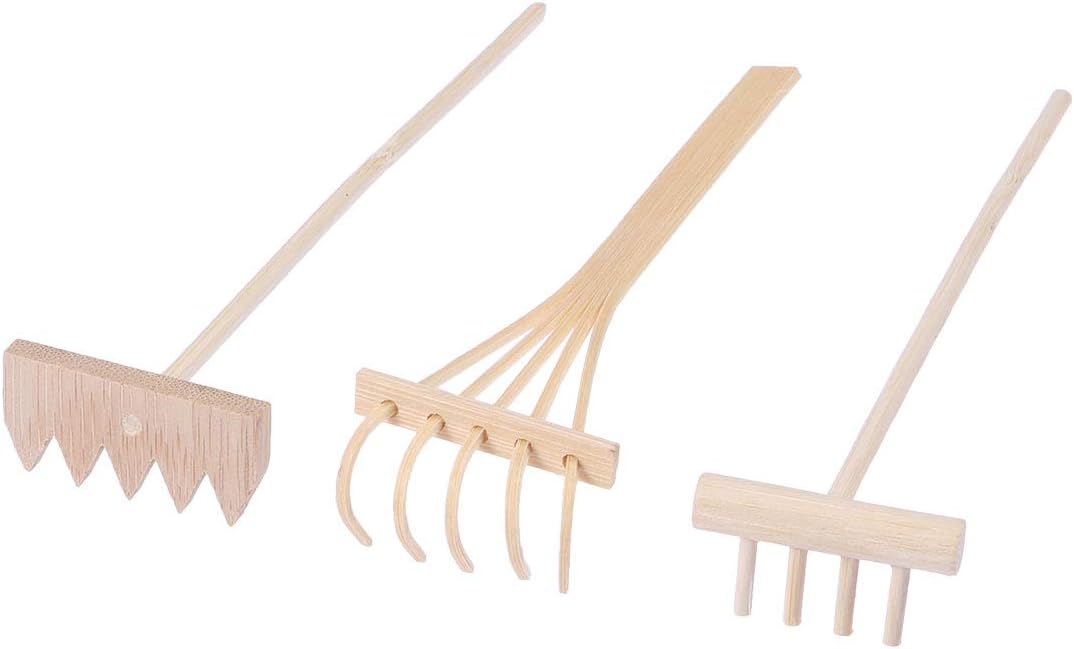
Best For: Raking relaxing patterns into miniature or full-size zen gardens
Our Recommendation: Supvox 3-piece mini rake set at Amazon for $9.11
Made of bamboo, these three rakes create variously shaped lines in zen garden sand. Each is about 5.5 inches long.
Zen gardens are incredibly calming; folks who have these types of gardens use special wooden rakes with different tines to create intricate patterns in the sand for relaxation. Options include rounded tines, triangular tines, and hooked tines. They come in large sizes for full-size Zen gardens but also smaller sizes for the miniature Zen gardens most folks are familiar with.
Traditional Zen garden rakes are made from bamboo. Bamboo is actually a fast-growing grass, and while this is the traditional choice, standard wooden tools in miniature sizes are more common today.
17. Fire Rake
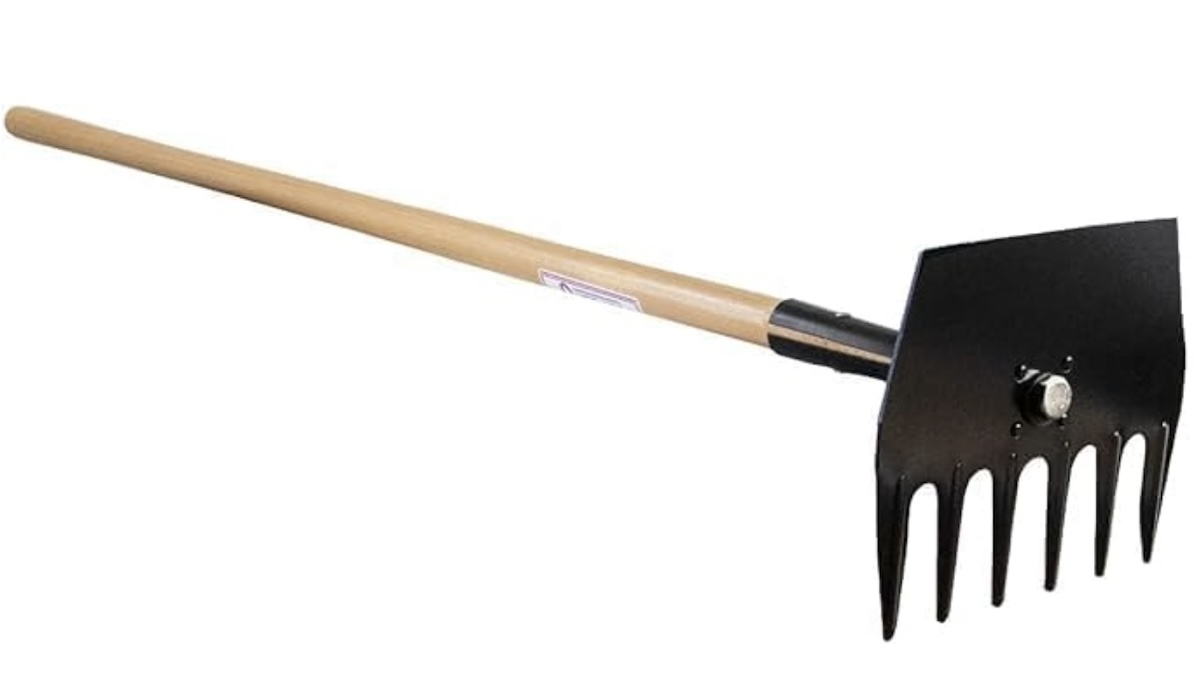
Best For: Creating firebreaks to prevent the spread of wildfires
Our Recommendation: FIREHUNTER McLeod fire rake at Amazon for $79.51
The McLeod fire rake features a heavy-duty carbon steel head with a hardwood handle.
Fire rakes see a completely different type of use than most other rakes. These rakes are designed to be used by woodland firefighters and emergency personnel to stop fires from growing and spreading. They typically have heavy-duty heads with deep, widely spaced tines. This allows the user to grab a lot of material quickly and drag it, forming what’s known as a “firebreak,” or a soil trench devoid of flammable materials.
Many fire rakes also feature a shovel or hoe on the other side of the tines. This is meant for chopping and digging, helping firefighters further remove flammable materials.
Final Thoughts
Rakes come in all sizes and shapes, and their primary function is to help gather or spread out material. Most DIY landscapers and gardeners can get by with just a few different types of rakes. For those tackling special projects, such as clearing moss from a pond or picking berries, there’s often a rake out there to help.
Prices listed here are accurate as of July 10, 2024.
